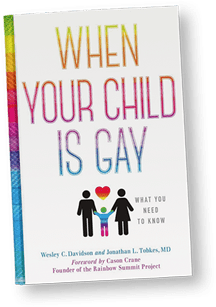New Term Coined
On April 1, 2014, I wrote a blog entitled “Primer for Straight Parents: Not Your Mother’s Dictionary of Terms!” about various definitions for sexual orientation. Just when you thought you had all the terms down pat, here comes another one, less clear-cut.
A well-known Cornell University professor of Clinical and Developmental Psychology, Ritch Savin-Williams, Ph.D., has a new term “mostly heterosexual.” According to this Chair of the Department of Human Development at Cornell and consultant to magazines and television talk shows, this new category is one that many heterosexuals experience.
What is “Mostly Heterosexual?”
Mostly heterosexuals are people who are usually attracted to and are sexually involved with the opposite gender, but may also experience attraction to and romantic feelings for people of the same gender from time-to-time. Even as far back as 2010, Savin-Williams was quoted in a New York Times article about sexuality as saying “that his current research reveals that the fastest-growing group along the sexuality continuum are men who self-identify as mostly straight” as opposed to labels like straight, gay or bisexual. They acknowledge some level of attraction to other men even as they say that they probably won’t act on it but…the right day, a few beers and who knows…”
Kinsey’s Model
Kinsey’s Sexual Continuum scale divided people into categories: 0-1 as heterosexual, 2-4 as bisexual, and 5-6 as gay/lesbian. Very little research heretofore had been done on people who place themselves in the 0-1 group. What if your feelings can’t be easily characterized? You can be heterosexual, but still have feelings for the same-sex? Then maybe you’re mostly heterosexual.
Savin-Williams and his graduate student Zhana Vrangalova described four major research findings about this group:
- · They have a distinct pattern of attractions and are more likely than exclusively heterosexuals to have same-sex behavior
- · They are well-represented in the population.
- · Their “mostly heterosexual” orientation was relatively stable over time and
- · This label was subjectively meaningful to those who adopted it.
Profile of A “Mostly Heterosexual”
- · Study found that mostly heterosexuals were more same-sex oriented than heterosexuals, but less so than bisexuals in terms of sexual attractions, fantasies and behavior.
- · True across ages and for both men and women
- · Effect was larger for sexual attraction than for same-sex behavior.
Population of Mostly Heterosexual
- · Researchers looked at data from 21 studies (from 6 counties) and found that there were rates about 7.6 -9.5% for women and 3.6-4.1) for men.
- · Very large surveys are needed.
This Is Not A Phase!
- · From early adolescence through adulthood, about half of those who initially identified as mostly heterosexual in adolescence will still identify that way in adulthood.
- · This stability was lower than for a heterosexual identity but higher than for a bisexual identity.
Savin-Williams, Director of the Sex and Gender Lab at Cornell, has been researching adolescent sexuality, specializing in gay, lesbian, and bisexuality, since 1983. He is the author of Mom, Dad, I’m Gay: How Families Negotiate Coming Out (2001)” and The New Gay Teenager (2005) and contends that there is a blurring of sexual identity, especially among youth. They do not want to be pigeonholed in a distinct category like heterosexual, bisexual or gay and are reluctant to define their sexuality- a distinction that probably wouldn’t have occurred thirty years ago.

When Your Child Is Gay: What You Need To Know
For more detailed advice, see book, co-authored with a mother of a gay son and a psychiatrist, Jonathan L. Tobkes, M.D.